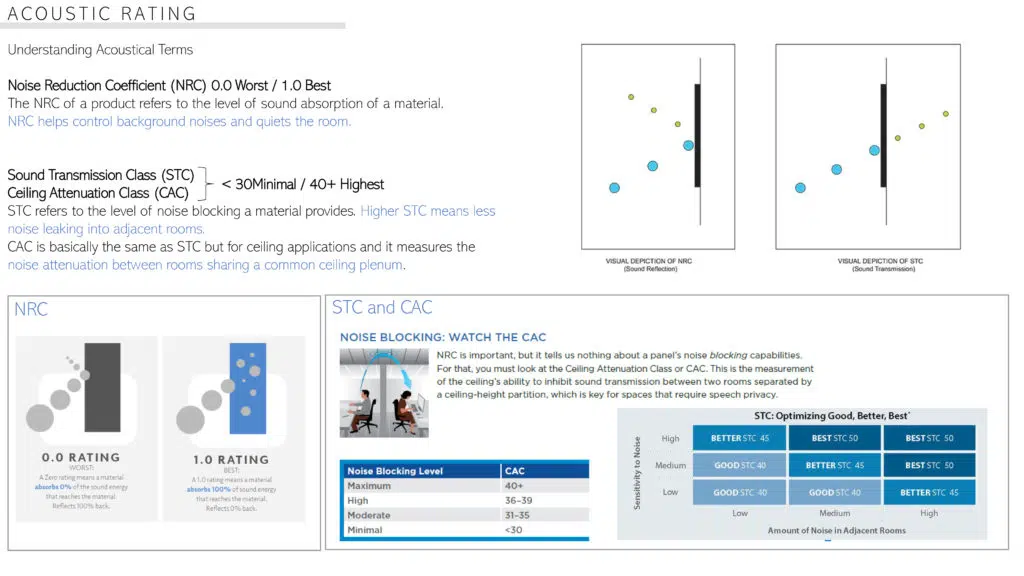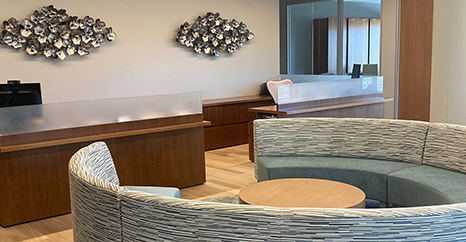To understand how to acoustically optimize a space, we first need to understand a few concepts: NRC, STC & CAC.
Acoustics are the way sound waves interact with the space around them. Whenever a sound is emitted, whether it be a human voice or a phone ringing, it projects sound waves outward. Those waves make contact with the surfaces around, from walls to ceilings to tables and bounce for a few seconds before they fade away. This is called reverberation.
How the waves interact with those surfaces depends on the materiality of the surface. Sometimes the sound waves will bounce off, while other times they’ll be absorbed. The level of absorption of a specific material can be measured by a mathematical formula and the result of that formula is called a Noise Reduction Coefficient or NRC. A material with an NRC of 0.0 will not absorb noise at all, on the other hand, a material with an NRC of 1.0 will absorb the noise waves that touch that surface and virtually no noise will bounce off of it.
Up to this point we have discussed noise that bounces off surfaces inside a room, but sometimes, noise can travel from room to room. To prevent noise “leaking” into adjacent rooms, we need to utilize materials with a high Sound Transmission Class or STC. A material with high STC will absorb sound waves allowing little to no noise to penetrate the material creating a noise barrier between one space and the next.
CAC refers to the Ceiling Attenuation Class, which similar to STC, measures how much noise can be transmitted from one space to another but on a ceiling application. Open plenum ceilings are commonly the culprits of sounds transmission in commercial buildings so when absolute privacy is required in an office, for example, ceiling tiles with a high CAC are recommended to prevent noise waves traveling to adjacent rooms.
TeamPAR has unique and effective solutions to enable privacy at all price points. Collaboration is key as we return to the office and communicate face to face. Ensuring sound quality does not cause interference is key to the RTO success.



